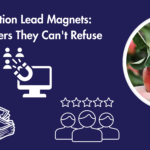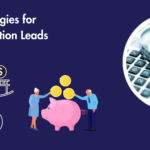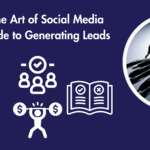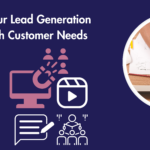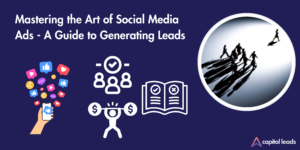What is Lead Nurturing?
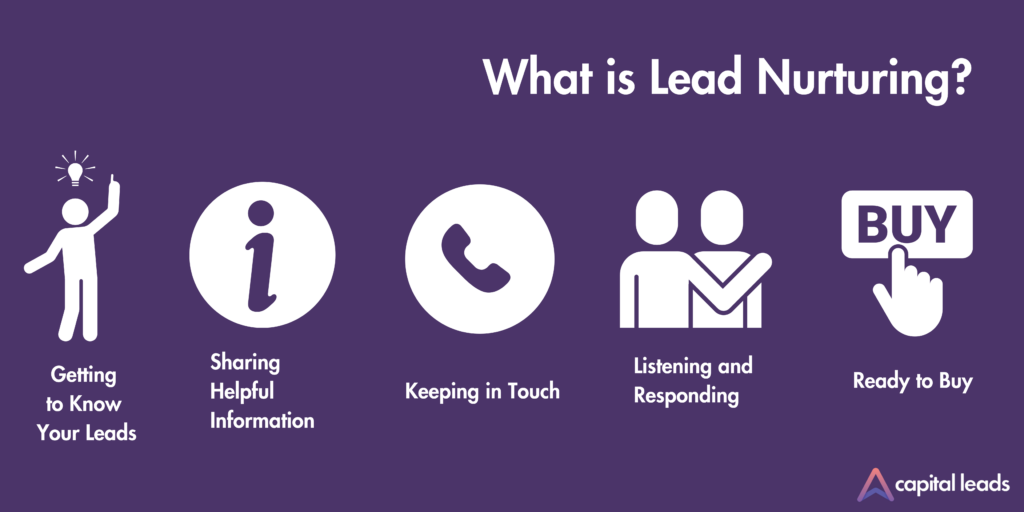
Lead nurturing is all about building relationships with people who might buy your product or service but aren’t ready to buy right away.
It’s like making friends with potential customers, helping them learn more about what you offer, and keeping them interested until they’re ready to make a purchase.
Imagine you have a garden. Your leads are like seeds you plant. Just like seeds need water and sunlight to grow, your leads need attention and information to turn into customers.
That’s what lead nurturing does. It gives your leads what they need, when they need it.
Here’s a simple way to understand lead nurturing:
Getting to Know Your Leads
This is like saying hello to someone new. You find out what they like, what they need, and what problems they’re trying to solve.
Sharing Helpful Information
Once you know more about your leads, you share stuff that they’ll find useful. This could be tips, articles, or details about your products that can help them.
Keeping in Touch
Just like you might send a message to a friend, you keep in touch with your leads. You might send emails, messages on social media, or even give them a call.
Listening and Responding
Good friends listen to each other. In lead nurturing, you pay attention to what your leads are saying and respond in helpful ways. If they have questions, you answer them. If they’re not ready to buy, you give them space and time.
Ready to Buy
Eventually, when your leads are ready to make a decision, they’ll think of you because you’ve been helpful and friendly all along. That’s when they’re most likely to become your customers.
In simple terms, lead nurturing is like a friendly guide that helps potential customers through their journey, making sure they have all the support and information they need until they’re ready to buy.
Why is Lead Nurturing Important?
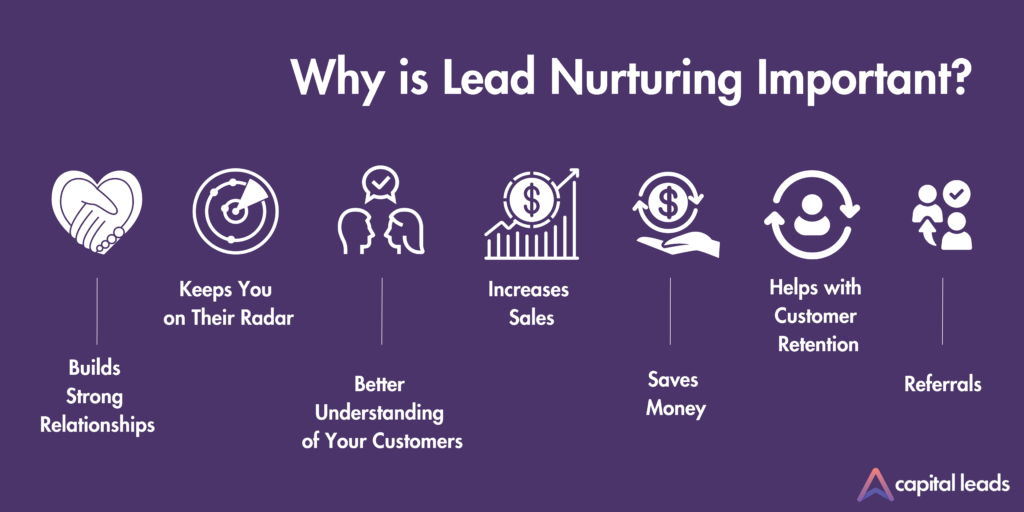
Lead nurturing is super important for a bunch of reasons, especially if you want to turn interested people into customers who love what you offer. Let’s break down why it’s such a big deal:
Builds Strong Relationships
Just like making a new friend, lead nurturing helps you build trust with potential customers. When you regularly engage with people and show them you understand their needs, they start to trust you more. This trust is key for when they decide to buy.
Keeps You on Their Radar
Think about how easy it is to forget something if you don’t see it often. The same goes for your business. By nurturing leads, you stay on their minds, so when they’re ready to buy, they think of you first, not your competitor.
Better Understanding of Your Customers
As you nurture leads, you learn a lot about what they need and want. This information is like gold – it helps you improve your products, services, and the way you talk to them.
Increases Sales
When people feel understood and trust you, they’re more likely to buy from you. Also, nurtured leads often spend more money than those who aren’t nurtured.
It’s like the difference between someone buying just because they need something and someone buying because they believe in the value of what you offer.
Saves Money
Getting a new customer can cost a lot more than keeping an existing one interested. Lead nurturing helps you make the most of the leads you already have, so you don’t always have to spend money finding new ones.
Helps with Customer Retention
Happy customers come back. If someone buys from you and you keep nurturing that relationship even after the sale, they’re more likely to come back and buy again.
Referrals and Word-of-Mouth
People talk. If you’ve nurtured a lead well and they love your product, they’ll tell their friends. This word-of-mouth can be a powerful and free way to get more customers.
In short, lead nurturing is like taking care of a plant. It might take time and effort, but the result is a strong, healthy relationship where both you and your customers are happy. This not only leads to more sales but also builds a solid foundation for your business’s growth.
How do You Nurture Leads?
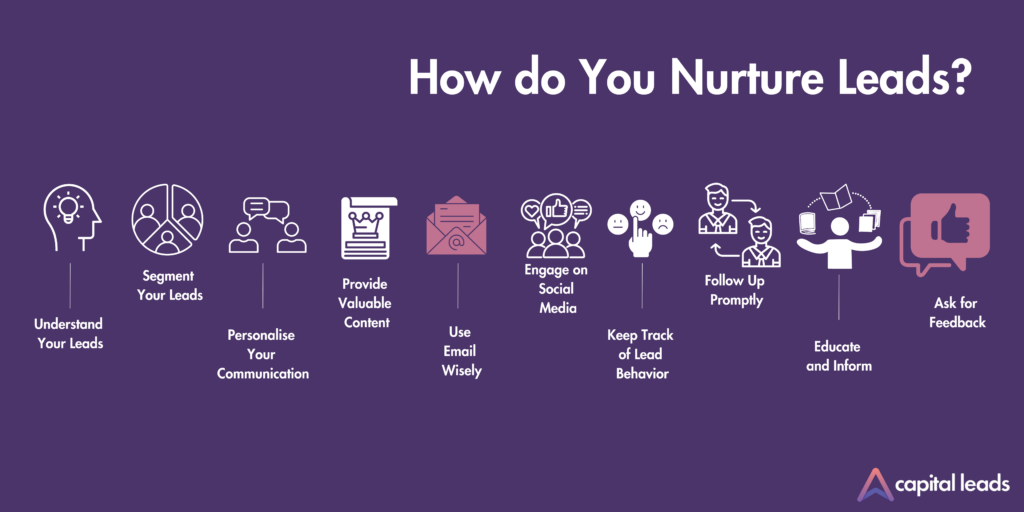
Understand Your Leads
Get to know who your leads are, particularly their needs and pain points. For example, if you’re dealing with solar panel leads, understand why they might be interested in solar energy.
Are they looking to save on electricity bills, or are they environmentally conscious? Understanding these motivations helps tailor your approach.
Conduct a survey asking leads why they’re interested in solar panels. Use the responses to create targeted messages.
Segment Your Leads
Group your leads based on interests, behaviours, or where they are in the buying process. For instance, solar panel leads could be segmented into homeowners, businesses, or environmentally conscious individuals.
This segmentation allows for more personalised communication.
Send different email campaigns to homeowners and businesses, highlighting benefits of solar panels relevant to each group.
Personalise Your Communication
Use the information you have about your leads to personalise your communication.
For a lead interested in a business loan, mention their specific business type and the challenges they might face, suggesting how a loan could help.
Example: For a small business owner, personalise an email by referencing their business type and how a loan could assist in expansion.
Provide Valuable Content
Share useful content that answers questions or provides insights. If your leads are interested in heat pumps, provide content like “The Ultimate Guide to Choosing the Right Heat Pump for Your Home.”
Example: Create blog posts or eBooks on topics like energy savings and eco-friendly home upgrades for those interested in heat pumps.
Use Email Wisely
Send regular, valuable emails without spamming. For solar panel leads, an email series might include the benefits of solar energy, customer testimonials, and financing options.
Begin with setting up a monthly newsletter that shares the latest advancements in solar technology and customer success stories.
Engage on Social Media
Be active where your leads are. Let’s say your leads come from LinkedIn. It’s a great idea to share posts about your business and client success stories on LinkedIN.
You can start a LinkedIn group for small business owners and regularly share insights about business financing, including loan options.
Keep Track of Lead Behavior
Monitor how leads interact with your content. If someone spends time on a page about the benefits of heat pumps, it indicates specific interest.
Use tracking tools to see which pages your leads visit most on your website and tailor your follow-up emails accordingly.
Follow Up Promptly
If a lead shows interest or reaches out, respond quickly. Suppose a lead asks about the return on investment (ROI) for solar panels. Promptly provide them with detailed information or a case study.
Have automated responses set up for common queries and a quick follow-up process for personalised questions.
Educate and Inform
Help leads make informed decisions by sharing detailed information. For example, you can conduct webinars on how solar panels can increase a property’s value or on the installation process.
Or, Host a webinar titled “Understanding the Financial Benefits of Solar Panels for Your Home.”
Ask for Feedback
Regularly ask your leads what they think and want. This can be done through surveys or direct communication.
Start by sending a survey asking business loan leads what information they find most useful when considering a loan.
Lead Nurturing Tactics for Each Step of Customers Buying Journey
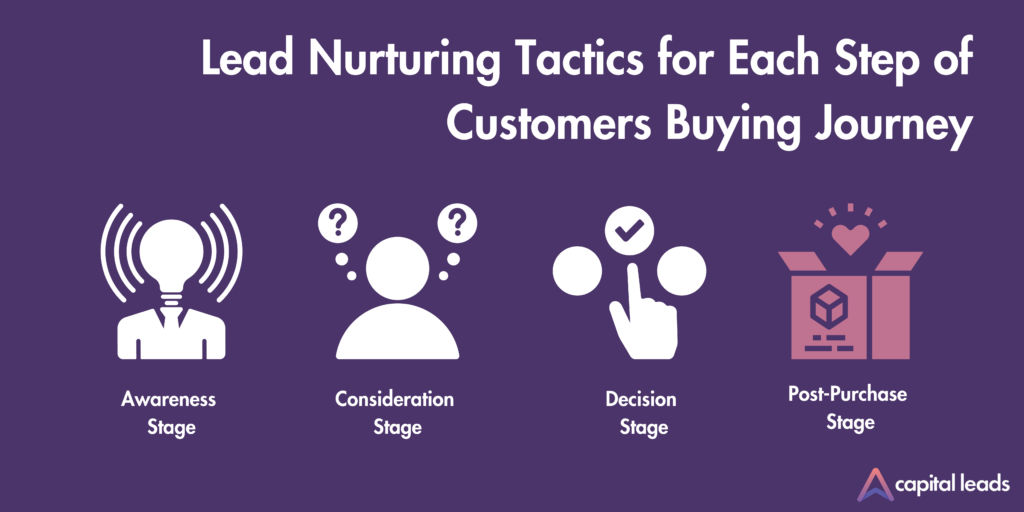
Awareness Stage
Educational Content
Create blog posts, infographics, and videos that explain key concepts related to your product. For solar panels, this could be ‘How Solar Panels Work’ or ‘The Environmental Impact of Solar Energy’.
Offer downloadable guides or eBooks on topics relevant to your industry.
Social Media Engagement
Share industry news, tips, and general educational content on platforms like Facebook, LinkedIn, or Instagram.
Engage with users through comments and messages, building a community around your brand.
SEO Strategies
Conduct keyword research to understand what potential customers are searching for and optimise your content accordingly.
Ensure your website has informative landing pages and a blog filled with helpful articles to attract organic traffic.
Consideration Stage
Targeted Email Campaigns
Segment your email list based on the interests shown in the Awareness stage and send more focused content.
Share customer stories, product details, and how your solution addresses their specific needs.
Webinars and Live Demos
Host webinars addressing common questions or concerns about your product. For instance, a webinar on ‘The Long-Term Benefits of Installing Solar Panels’.
Offer live product demonstrations to showcase usability and effectiveness.
Case Studies and Testimonials
Publish case studies illustrating how your product has helped others, focusing on outcomes relevant to your audience’s needs.
Share customer testimonials in your emails, on your website, and on social media.
Decision Stage
Free Trials or Consultations
Offer a free consultation for more complex products like solar panel installations or business loans.
If applicable, provide a free trial period for your product or service.
Comparison Content
Create content that compares your product with others in the market, highlighting what sets yours apart.
Use comparison charts, videos, or blog posts for this purpose.
Special Offers and Discounts
Introduce exclusive discounts for first-time buyers or limited-time offers to create a sense of urgency.
Bundle products or services together for a special price to increase perceived value.
Post-Purchase Stage
Follow-Up Surveys
Send surveys to new customers to get feedback on their buying experience and product satisfaction.
Use this feedback to improve your product and customer service.
Loyalty Programs
Develop a loyalty program that rewards repeat purchases or referrals, encouraging long-term relationships.
Offer discounts or special benefits to members of the loyalty program.
Regular Updates and Support
Keep customers informed about new products, updates, or company news through regular newsletters.
Provide ongoing support and maintenance tips, especially for products like solar panels or heat pumps.
In each stage, it’s crucial to focus on the evolving needs and behaviours of your leads. By providing them with relevant, valuable information and support at each stage, you increase the likelihood of converting leads into customers and retaining them in the long term.
Conclusion
Effective lead nurturing is a critical component in the journey of converting prospects into loyal customers. It’s about providing the right information at the right time, understanding customer needs, and maintaining a consistent, engaging relationship throughout the buying process.
At Capital Leads, we excel in generating quality leads at scale for high-growth companies, especially in sectors like solar, home improvement, and finance. Our approach is grounded in a deep understanding of lead generation across multiple platforms, ensuring that the leads you receive are not just numerous, but also of the highest quality and data-validated.
Ready to revolutionise your lead generation strategy and propel your business to new heights? Begin your journey with us at Capital Leads and experience the power of truly effective lead nurturing that aligns with your ambitious growth objectives.



